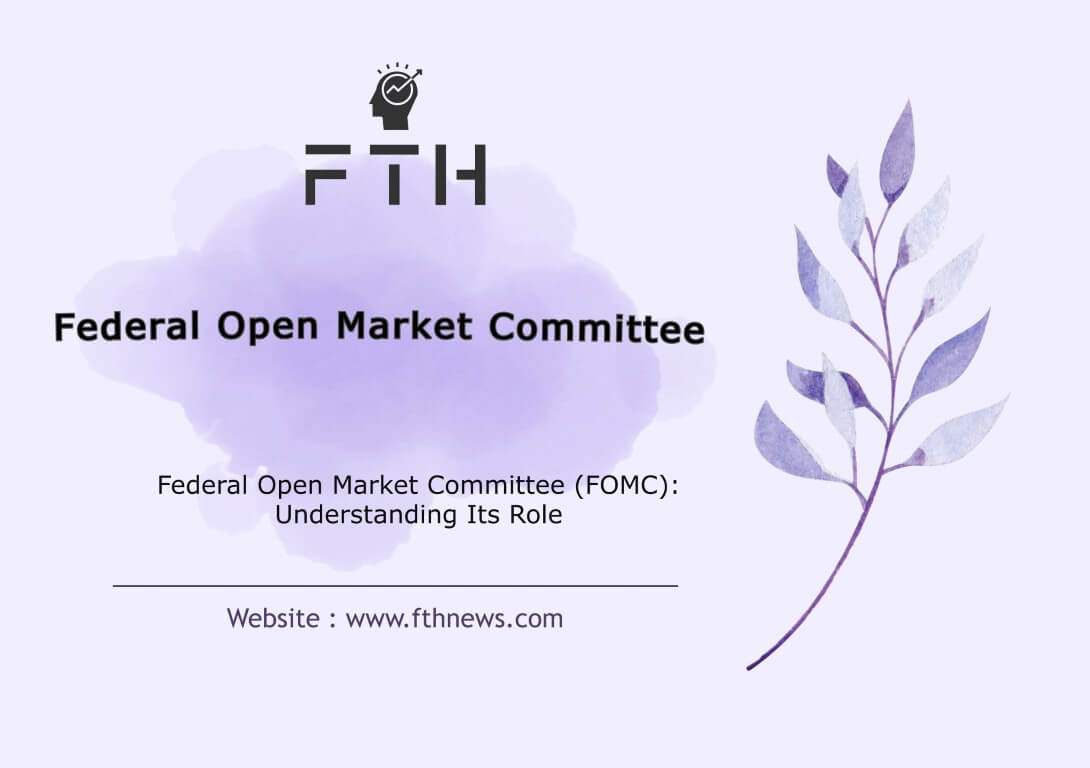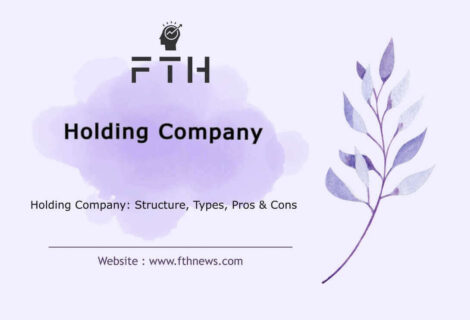
Federal Open Market Committee (FOMC): Understanding Its Role
Welcome to our in-depth exploration of the Federal Open Market Committee (FOMC), the powerhouse behind the United States’ monetary policy. In this article, we’ll unravel the intricacies of the FOMC, shedding light on its role, structure, and global impact, as well as why it holds a crucial place in financial markets.
Understanding the Federal Open Market Committee (FOMC):
The Federal Open Market Operations Committee, or FOMC, stands as a linchpin in the intricate machinery of global financial markets. Its decisions reverberate not only within the confines of the US economy but echo across international borders, casting a profound impact on a myriad of financial instruments. Among these, the US dollar emerges as a focal point, its value and trajectory intricately intertwined with the pronouncements made within the hallowed halls of the FOMC.
These meetings are not mere routine affairs; they are highly anticipated events that command the attention of investors worldwide, irrespective of their scale. The outcomes of FOMC deliberations wield the power to mold market dynamics, influencing not only currency valuations but also shaping the trajectories of stocks, bonds, and commodities. Small investors and institutional giants alike find themselves on the edge of their seats, poised to respond to the decisions that emanate from these pivotal gatherings.
The FOMC, in essence, is a conduit through which the pulse of the global economy is measured and moderated. Its decisions serve as a compass guiding the financial world through the ever-changing currents of economic tides. As such, understanding the nuanced workings of the FOMC is not merely an academic exercise but a strategic imperative for anyone seeking to navigate the dynamic landscape of international finance.
What is the Federal Open Market Committee (FOMC)?
The Federal Open Market Committee (FOMC) is the navigational helm of the Federal Reserve System (FRS), entrusted with the formidable responsibility of sculpting the trajectory of US monetary policy. Since its establishment in 1933, the FOMC has evolved into a powerhouse, wielding the tools of open market operations (OMOs) to finely calibrate the nation’s economic direction.
Comprising seven esteemed members of the Board of Governors and five influential presidents from the Federal Reserve Banks, the FOMC convenes regularly to deliberate on the intricate dance of monetary policy. These gatherings, anticipated and scrutinized on Wall Street and beyond, delve into pressing questions surrounding imminent shifts in monetary strategy.
The FOMC’s origins trace back to the crucible of economic challenges during the Great Depression, and its role has since expanded to become a linchpin of financial stability and growth. This committee’s decisions, made through a careful fusion of economic expertise and policy acumen, echo far beyond the walls of the meeting room, shaping the contours of the US economy and, by extension, the global financial landscape.
As the FOMC’s deliberations unfold, the financial world hangs on every word, interpreting nuanced statements and policy shifts for cues on interest rates, inflation, and overall economic health. These deliberations are not merely bureaucratic rituals; they are pivotal moments that set the tone for market sentiment and investor confidence. To grasp the essence of the FOMC is to unlock insights into the heartbeat of monetary policy—a pulse felt not just within the realm of economic textbooks but resonating in the daily lives of businesses, investors, and individuals around the globe.
Structure of the Federal Open Market Committee (FOMC):
Delving into the intricate gears of the Federal Open Market Committee (FOMC) reveals a structure finely tuned to navigate the complexities of monetary policy decisions. Comprising 12 distinguished members, the FOMC is a mosaic of perspectives, bringing together governors and Federal Reserve Bank presidents to orchestrate the nation’s economic course.
Within this assembly, each member carries a distinctive label—hawk, dove, or centrist—a reflection of their stance on monetary policy. The hawks advocate for tighter policies, aiming to curb inflation, while the doves lean towards stimulus measures to foster economic growth. The centrists navigate a middle path, balancing these contrasting viewpoints. This diversity of opinion within the FOMC forms the crucible in which monetary strategies are forged.
The heartbeat of the FOMC resonates through eight scheduled meetings each year. These gatherings, akin to economic symphonies, offer a stage for in-depth discussions on economic and financial conditions, risks, and the appropriate stance of monetary policy. In this confluence of ideas, all 12 Federal Reserve Bank presidents contribute their insights, though not all possess voting rights.
The distinction between voting and non-voting members adds a layer of complexity to the decision-making process. While the views of all members are valued, only some hold the power to cast a vote on monetary policy actions. This democratic yet nuanced approach ensures a comprehensive examination of economic factors, fostering a collaborative atmosphere that shapes the trajectory of the nation’s monetary policies.
In deciphering the structure of the FOMC, one unveils not just an organizational chart but a dynamic forum where economic theories, real-world impacts, and divergent opinions converge. It is within this framework that the pulse of the nation’s economic health is measured, providing critical insights for investors, policymakers, and anyone seeking to unravel the intricate dance of monetary decision-making.
What Does the Federal Open Market Committee Do?
The Federal Open Market Committee (FOMC) is the monetary policy-making arm of the Federal Reserve System in the United States. Established to guide and implement monetary policies, the FOMC plays a crucial role in influencing the country’s economic performance. Here are some key functions and responsibilities of the FOMC:
Open Market Operations:
The FOMC conducts open market operations (OMOs), buying and selling U.S. government securities. These transactions aim to control the money supply, influence interest rates, and achieve the FOMC’s dual mandate of maximum employment and stable prices.
Determining the Federal Funds Rate:
One of the primary tools at the FOMC’s disposal is the federal funds rate, the interest rate at which banks lend to each other overnight. By setting a target for this rate, the FOMC can influence short-term interest rates throughout the economy, impacting borrowing costs for businesses and consumers.
Evaluating Economic Conditions:
The FOMC regularly assesses economic and financial conditions in the United States. This involves a comprehensive review of various indicators such as inflation, employment, GDP growth, and consumer spending. The committee uses this information to make informed decisions on monetary policy.
Setting Monetary Policy:
Based on their evaluation of economic conditions, FOMC members determine the appropriate stance of monetary policy. This includes deciding whether to tighten or loosen monetary conditions by adjusting interest rates or implementing other policy tools.
Communicating Policy Decisions:
Communication is a vital aspect of the FOMC’s role. After each meeting, the committee issues statements outlining its decisions, including any changes to the federal funds rate and insights into the economic outlook. Additionally, minutes of the meetings are released, providing more detailed insights into the discussions and perspectives of committee members.
Fostering Financial Stability:
Beyond immediate policy decisions, the FOMC promotes financial stability by influencing interest rates and liquidity. The committee aims to foster conditions supporting a stable and robust financial system.
In summary, the Federal Open Market Committee is instrumental in shaping U.S. monetary policy, focusing on maximum employment and price stability. Through open market operations, interest rate decisions, and ongoing economic evaluations, the FOMC navigates the complexities of the economic landscape, contributing to the nation’s overall well-being.
How Often Does the Federal Open Market Committee Meet?
The Federal Open Market Committee (FOMC) typically convenes eight times a year. These meetings are crucial junctures where members assess economic conditions, review indicators, and decide on monetary policy. The schedule offers transparency, allowing markets and the public to anticipate and react to any policy adjustments or changes to the federal funds rate during these gatherings.
Subject of Federal Open Market Committee Decisions
The Federal Open Market Committee (FOMC) primarily focuses on decisions related to monetary policy, guided by its dual mandate: achieving maximum sustainable employment and maintaining price stability. The committee deliberates on various elements to fulfill these objectives:
1. Interest Rates:
The federal funds rate, representing the overnight lending rate between banks, is a central component of FOMC decisions. Adjustments to this rate influence borrowing costs and, consequently, economic activity.
2. Open Market Operations:
The FOMC determines the course of open market operations, involving the buying and selling of government securities. These operations impact the money supply, aiming to achieve the committee’s monetary policy goals.
3. Communication:
Decisions made by the FOMC are communicated to the public through statements. These statements convey the committee’s assessment of economic conditions, its outlook, and any changes to monetary policy.
4. Economic Projections:
FOMC members provide projections for key economic indicators, such as GDP growth, unemployment rates, and inflation. These projections offer additional context for understanding the committee’s policy decisions.
The overarching subject of FOMC decisions lies in its commitment to fostering economic stability, promoting maximum employment, and ensuring price stability. These decisions have far-reaching effects on financial markets, interest rates, and the broader U.S. economy.
What is the Federal Open Market Committee Responsible For?
The Federal Open Market Committee (FOMC) holds a pivotal role in shaping and implementing monetary policy in the United States. Tasked with a dual mandate, the committee is responsible for:
1. Formulating Monetary Policy:
The FOMC is charged with the formulation of monetary policy to achieve its dual mandate: promoting maximum sustainable employment and maintaining price stability. Through a combination of tools, the committee influences economic conditions to support long-term economic goals.
2. Setting the Federal Funds Rate:
A key instrument at its disposal is the federal funds rate, dictating the interest rate at which banks lend to each other overnight. By setting a target for this rate, the FOMC guides short-term interest rates throughout the economy, impacting borrowing costs and economic activity.
3. Open Market Operations (OMOs):
The FOMC conducts open market operations, involving the buying and selling of U.S. government securities. These operations influence the money supply, interest rates, and overall economic activity, aligning with the committee’s monetary policy objectives.
4. Evaluating Economic Conditions:
Regular assessments of economic conditions, including indicators such as inflation, employment, GDP growth, and consumer spending, form the basis for FOMC decisions. This evaluation informs the committee’s approach to achieving its dual mandate.
5. Communication:
The FOMC communicates its decisions and insights to the public through statements and meeting minutes. This transparent communication serves to provide guidance to financial markets and the public, enhancing understanding of the committee’s rationale.
6. Fostering Financial Stability:
Beyond immediate policy decisions, the FOMC plays a role in fostering financial stability. Through its influence on interest rates and liquidity in financial markets, the committee contributes to maintaining a stable and resilient financial system.
In essence, the FOMC’s responsibilities encompass steering the U.S. economy towards sustainable growth, full employment, and price stability. Through its various tools and strategic decisions, the committee plays a critical role in shaping the trajectory of the nation’s monetary policy.
Who Controls the Federal Open Market Committee?
The governance of the Federal Open Market Committee (FOMC) is structured within the broader framework of the Federal Reserve System, involving multiple entities and individuals:
1. Federal Reserve Board of Governors:
The FOMC comprises seven members of the Federal Reserve Board of Governors. Appointed by the President and confirmed by the Senate, these members, including the Chair and Vice Chair, play a crucial role in influencing and guiding FOMC decisions.
2. Federal Reserve Bank Presidents:
Five of the twelve Federal Reserve Bank presidents participate in FOMC meetings on a rotating basis. While all twelve presidents engage in discussions, only specific ones have voting rights at any given time. Their regional perspectives contribute to the committee’s decision-making process.
3. Chair of the Federal Reserve:
The Chair of the Federal Reserve, concurrently serving as the Chair of the Board of Governors, holds a leadership role in the FOMC. Appointed by the President and confirmed by the Senate, the Chair plays a pivotal part in shaping monetary policy discussions and decisions.
4. Committee Members:
The FOMC consists of a total of twelve members, encompassing both the Board of Governors and Federal Reserve Bank presidents. This diverse composition ensures a comprehensive representation of views and perspectives in the decision-making process.
In essence, the control and governance of the FOMC involve collaborative efforts among the Federal Reserve Board of Governors, Federal Reserve Bank presidents, and the Chair of the Federal Reserve. The collective expertise and diverse perspectives of these individuals contribute to the committee’s role in shaping U.S. monetary policy.
Why Do FOMC Officials Meet?
The Federal Open Market Committee (FOMC) convenes with a distinct purpose that extends beyond routine discussions. These strategic sessions serve as the nexus for steering the intricate ship of the U.S. economy.
Balanced Open Market Operations:
At the core of FOMC meetings is the meticulous consideration of open market operations (OMOs). These operations are critical for the functioning of the U.S. government and the intricate web of financial institutions. The FOMC ensures that the equilibrium of OMOs is maintained, safeguarding the stability of the nation’s economic machinery.
Reviewing Economic Conditions:
FOMC meetings serve as economic roundtables where officials delve into comprehensive reviews of economic conditions. From employment rates to inflation trends, every facet is scrutinized to form the bedrock upon which decisions are made. This holistic analysis informs the determination of the optimal monetary policy stance.
Securing Long-Term Stability and Growth:
The overarching goal is to secure the long-term stability and growth targets of the U.S. economy. FOMC officials, acting as economic custodians, navigate the complexities of a constantly evolving financial landscape. Decisions made during these sessions are dynamic, reflecting a continuous interplay of assessments, forecasts, and policy considerations.
Influencing the Global Financial Landscape:
A pivotal instrument in the FOMC’s arsenal is the management of open market operations, influencing the federal funds rate. This rate, foundational to short-term interest rates, resonates globally. The FOMC’s actions create a financial ripple effect, impacting borrowing costs and financial conditions on an international scale.
In essence, FOMC meetings transcend the boardrooms of policy wonks. They represent a concerted effort to fine-tune the levers of the economy, ensuring its resilience and adaptability in the face of global challenges. The FOMC, through its meetings and decisions, emerges as the guardian of economic equilibrium, wielding influence not just over interest rates but over the interconnected global financial system.
Why Are FOMC Meetings Important?
FOMC meetings are pivotal on the global economic stage, drawing intense scrutiny worldwide. Their significance extends beyond the United States, impacting currency markets, investor sentiment, and the intricate dance of monetary policy.
Global Economic Pillar:
As one of the three primary arms of the Federal Reserve, the FOMC occupies a central role in the global economic framework. Its decisions ripple across continents, given the US dollar’s status as the world’s reserve currency. This pivotal role amplifies the importance of FOMC meetings, making them a focal point for investors, policymakers, and financial institutions worldwide.
Monitoring the Economic Compass:
Global investors closely watch FOMC meetings, viewing them as a compass for major market movements. Decisions made within these meetings can sway market sentiments, influence investment strategies, and set the tone for global economic landscapes.
Interest Rates and Monetary Policies:
The FOMC’s ability to set interest rates and shape monetary expansion policies is a linchpin of its significance. These decisions have a direct and immediate impact on currencies and various investment instruments. The delicate calibration of interest rates can trigger shifts in borrowing costs, affecting the allure of different assets and reshaping the global financial terrain.
Navigating Economic Seas:
In essence, FOMC meetings steer the world’s largest economy. Decisions made during these sessions possess a domino effect, influencing US economic stability and resonating through the global market web.
Recognizing FOMC meetings as catalysts for grand-scale change is crucial. As the FOMC deliberates, economic ripples transcend borders, making its decisions critical not just for the US but influential in shaping the destiny of the global financial ecosystem.
How to Interpret FOMC Meeting Minutes:
Unraveling FOMC meeting minutes is a coveted skill for investors navigating financial markets. Delving into these documents is like deciphering the economic Rosetta Stone, offering crucial insights into the future of currencies, commodities, and equities.
1. Interest Rate Decisions:
At the heart of FOMC meeting minutes lie revelations about interest rate decisions. Investors keen on understanding the market’s pulse must scrutinize the minutes for clues regarding potential shifts in interest rates. Changes in these rates have a cascading effect on borrowing costs and, consequently, impact various asset classes.
2. Opinions of Committee Members:
The minutes offer a window into the diverse opinions within the committee. Investors should pay heed to the views of hawks, doves, and centrists. Hawkish sentiments, advocating for tighter monetary policies, may suggest a conservative economic approach. Conversely, dovish tones indicating a preference for stimulus measures could signal an accommodative stance. The balance struck by centrists reflects a nuanced approach, offering valuable cues for market participants.
3. Economic Indicators and Overall Sentiment:
Embedded within the minutes are discussions on crucial economic indicators. Savvy investors extract valuable information on inflation rates, employment outlook, and overall economic sentiment. These indicators are key drivers of market dynamics, influencing investment decisions across asset classes. A keen understanding of the economic landscape painted in the minutes allows investors to anticipate market reactions.
4. Comprehensive Interpretation:
Interpreting FOMC meeting minutes necessitates a holistic approach. Investors should not view individual factors in isolation but rather weave them together to construct a comprehensive narrative. Assessing the interplay between interest rate decisions, committee opinions, and economic indicators provides a nuanced understanding of the committee’s collective outlook.
5. Relevance to Informed Decisions:
Ultimately, the goal of interpreting FOMC meeting minutes is to empower investors to make informed decisions. By extracting meaningful insights from these documents, investors gain a competitive edge in anticipating market movements, adjusting portfolios, and navigating the financial landscape with heightened acumen.
In essence, mastering the art of interpreting FOMC meeting minutes is akin to deciphering a roadmap for market behavior. Those who can adeptly read between the lines stand poised to make strategic and well-informed investment decisions in the ever-evolving world of global finance.
Conclusion:
In conclusion, the Federal Open Market Committee plays a pivotal role in shaping the global financial landscape. Investors and analysts must closely follow FOMC meetings and interpret outcomes to stay ahead in an ever-evolving economic environment.
Stay informed, stay empowered. Understanding the Federal Open Market Committee is key to making informed investment decisions in a dynamic and interconnected world.
FAQ
Yes, the Federal Open Market Committee (FOMC) is a part of the Federal Reserve System, often referred to as “the Fed.” The FOMC is responsible for formulating and implementing monetary policy in the United States.














